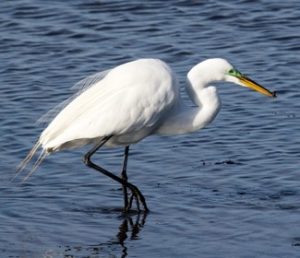The climate is changing. Most experts suggest that New Jersey will experience increases in the overall amount of precipitation in coming years. Heavy precipitation events, including nor’easters and named storms, will occur more often and increase in intensity. Thus, we will see increased nuisance and major flooding in many areas.
Stormwater systems (storm drains, detention basins, culverts, etc.) designed for rainfall amounts from 20 years ago will be unable to handle the additional stormwater, exacerbating flooding that is already causing problems throughout the state. Locally, stormwater running off of the developed landscape will carry additional pollutants into our already stressed streams, rivers, and ultimately our bays. In its 2016 analysis of water quality within the Barnegat Bay watershed, the NJ Department of Environmental Protection reported that 5 segments of the bay and 24 tributaries do not meet assigned designated uses, often due to excessive nutrients and other pollutants delivered in stormwater runoff.
In recognition of these changing conditions, the NJ Department of Environmental Protection recently revised its Stormwater Regulations to require the use of green infrastructure (GI) to manage stormwater close to its source. Green infrastructure enables stormwater and melting snow to soak into soils near where they fall or be captured for beneficial re-use. GI techniques include pervious pavement, rain gardens, rain barrels and cisterns, vegetated swales, and bioretention basins. This way of managing and retaining the stormwater on a developed site minimizes the flow of stormwater and pollutants into the local stormwater system and the surface waters within the watershed.
Importantly, the revised Stormwater Regulations allow municipalities to take additional actions, including adopting ordinances with standards stronger than the statewide minimum requirements, and to implement stronger or additional measures to improve local water quality and reduce flooding. Municipalities which employ additional and optional measures (e.g., pervious pavement, stormwater swales, stormwater basin retrofits) to address stormwater runoff from the developed landscape can eliminate localized flooding in many areas and reduce pollutant loads and eutrophication throughout the Barnegat Bay watershed.
Because stormwater pollution and flooding are likely to worsen throughout the watershed, the Barnegat Bay Partnership and its partners strongly encourage all municipalities to implement various additional and optional measures and enhanced stormwater protection actions, including ordinances with standards stronger than the DEP minimum stormwater regulation requirements. Because choosing among optional measures requires site-specific and other information, we encourage municipal officials and others to consult with experts, such as local engineering firms specializing in stormwater management, as well as the NJDEP and Barnegat Bay Partnership. The BBP’s Recommendations to Municipalities to Reduce Nonpoint Source Pollution and Flooding from Stormwater includes links to several model stormwater ordinances.
Adoption of additional measures to manage stormwater now will position municipalities to take advantage of future state and federal funding opportunities related to stormwater management and green infrastructure, and will provide a head start on nutrient reductions likely to be required under additional regulations currently being contemplated. Thus, these enhanced measures to address stormwater runoff will have substantial benefits to municipalities, especially in areas that currently experience frequent flooding, and should be pursued with all haste.


